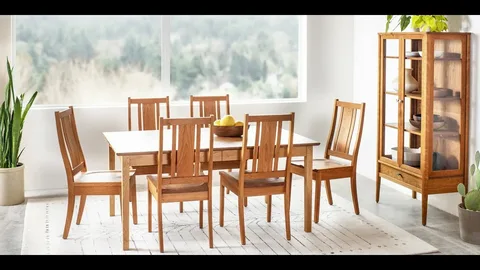Vintage furniture holds a charm and character that modern pieces often lack. Whether it’s a weathered dresser, an old wooden chair, or a rustic table, restoring vintage furniture can breathe new life into these timeless treasures. If you’re new to this craft, a beginner’s guide to restoring vintage furniture can help you embark on this rewarding journey with confidence.
Why Restore Vintage Furniture?
Restoring vintage furniture is more than just a DIY project. It’s about preserving history, reducing waste, and creating unique pieces that tell a story. Unlike buying new furniture, restoration allows you to customize and revive something with a soul, often at a fraction of the cost.
Essential Tools and Materials for Beginners
Before diving into restoration, it’s important to gather the right tools and materials. Here’s a basic list every beginner should have:
- Sandpaper (various grits)
- Paint stripper or remover
- Wood glue and clamps
- Brushes and rags
- Wood stain or paint
- Protective gloves and mask
- Screwdrivers and pliers
Having these items ready will make the process smoother and more enjoyable.
Step-by-Step Process in A Beginner’s Guide to Restoring Vintage Furniture
1. Assess the Furniture
Begin by examining the piece carefully. Look for damage, loose joints, or missing parts. Understanding the condition will guide your restoration plan.
2. Clean Thoroughly
Remove dirt, grime, and old polish using mild soap and water or a specialized cleaner. This step reveals the true state of the wood underneath.
3. Strip Old Finish
If the existing finish is cracked or peeling, use a paint stripper or sandpaper to remove it. Take care to follow safety instructions to protect your skin and lungs.
4. Repair and Sand
Fix any structural issues with wood glue or by replacing missing parts. Sand the surface to smooth out imperfections and prepare it for finishing.
5. Apply Stain or Paint
Choose a wood stain or paint that complements the furniture’s style. Apply evenly and let it dry completely before handling.
6. Seal the Surface
To protect your work, apply a clear sealant like polyurethane. This will help preserve the finish and extend the furniture’s life.
Tips for Beginners
- Start small: Choose a simple piece like a stool or side table for your first project.
- Take your time: Rushing can lead to mistakes; patience is key.
- Research: Watch tutorials and read guides to understand different techniques.
- Test products: Always test stains or paints on a hidden area first.
Conclusion
Restoring vintage furniture is a fulfilling hobby that combines creativity with craftsmanship. By following a beginner’s guide to restoring vintage furniture, you can transform worn-out pieces into stunning, functional art that enhances your living space. Whether you’re aiming to preserve family heirlooms or find unique décor, vintage restoration offers endless possibilities for those willing to learn.

